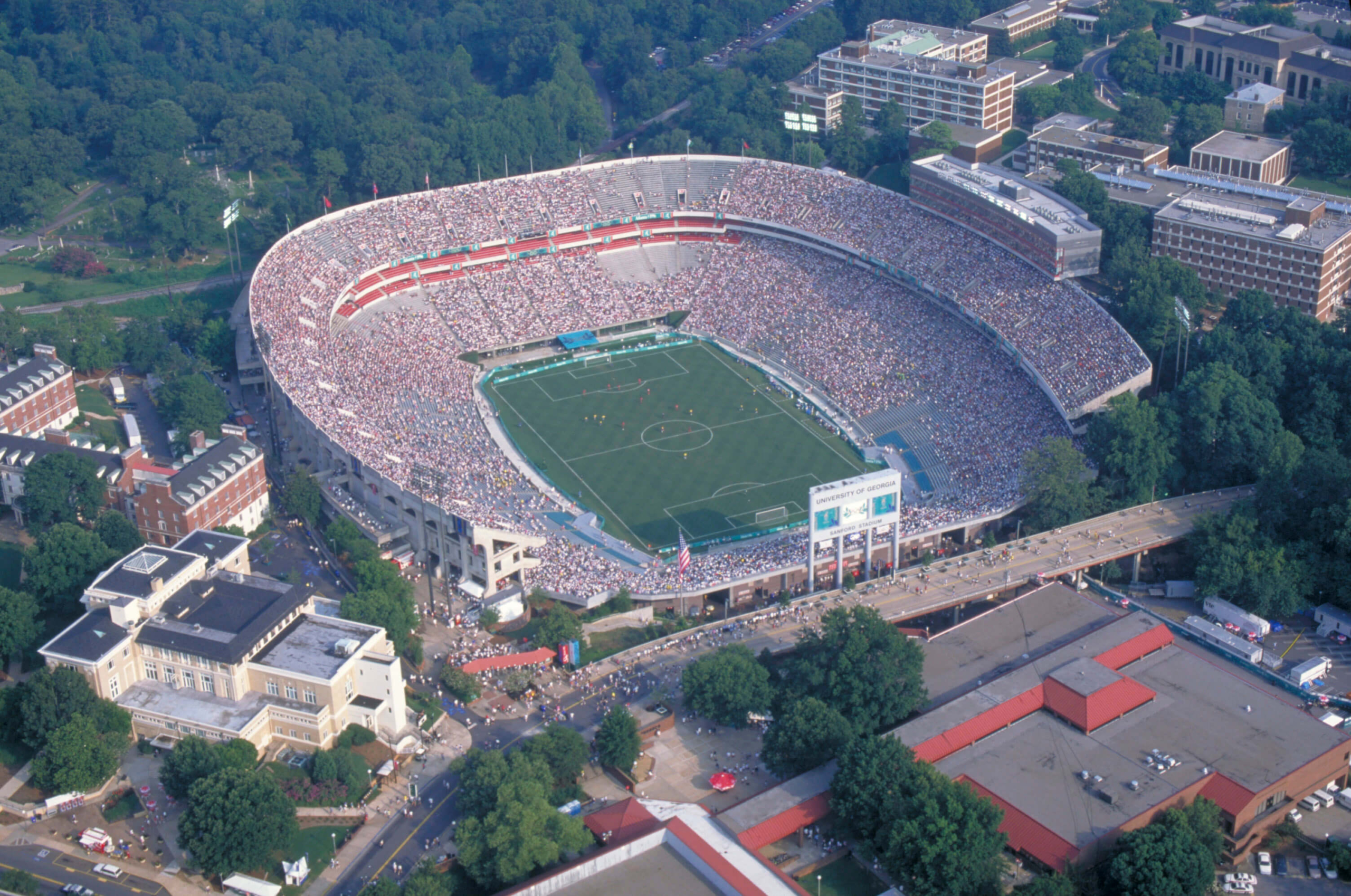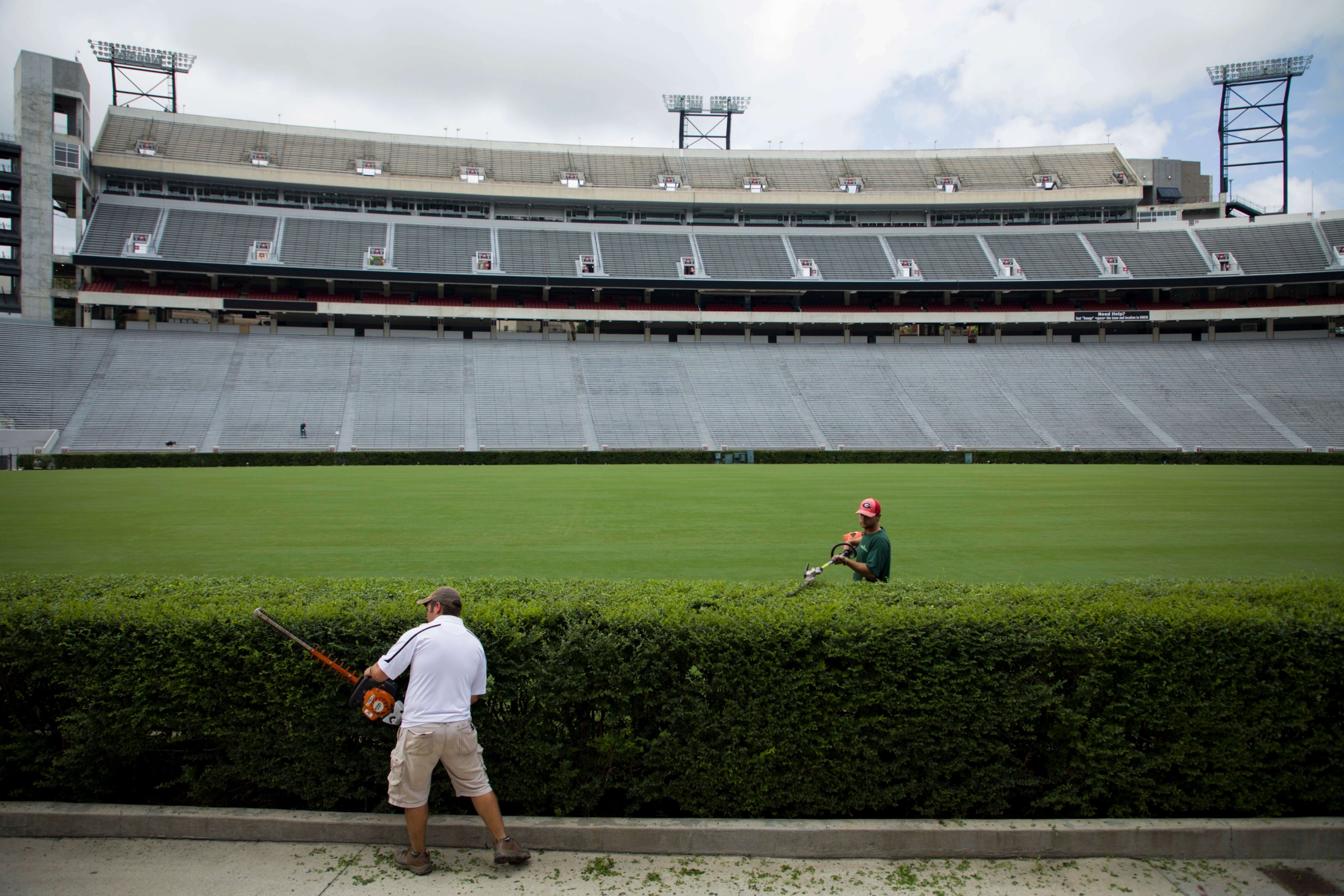About, Behind and Between the Hedges
As generations of Bulldogs would tell you, there’s no line of shrubbery as iconic to sports as the hedges of the University of Georgia’s Sanford Stadium. The Chinese privet bushes – Ligustrum sinense, taxonomically speaking – that frame Dooley Field have seen every Georgia home game since 1929.
For the third time in UGA history, the hedges were removed this February. They’ll be revitalized off-site ahead of the 2024 football season, including a full soil replacement, irrigation, and drainage work. The hedges will be replanted with plants of the same lineage in time for the 2024 G-Day game.
IN THE BEGINNING
The hedges’ storied history began in 1926 at the Rose Bowl, when a UGA Athletic Department employee noticed the red rosebushes surrounding the field. Meanwhile, back in Athens, UGA’s president at the time, Steadman V. Sanford, had started construction on what he hoped would become the best college football stadium in the South.
The employee suggested that rosebushes be planted around the field, and the idea was received well – with one caveat. Rosebushes wouldn’t thrive in Athens’s climate. Fast-growing, hardy Chinese privet given to the university by an Atlanta donor would be planted instead.
In 1929, the university sent the governor’s son, who was a UGA student, and his ROTC instructor to Atlanta in a khaki-green military truck to pick up the bushes. The truck, owned by the ROTC department, was the only vehicle in the university fleet large enough for the job. As the legend has it, the truck’s headlights went out on the way back and the ROTC instructor crawled onto the hood of the truck to light the way, clinging on with one hand and holding a flashlight with the other while the governor’s son drove.
Once the truck arrived at the stadium, workers planted the hedges overnight with hours to spare until the next day’s game against Yale. The 1929 Georgia-Yale game was the first one played in newly dedicated Sanford Stadium. It was the largest athletic event ever held in the South at that time, with 30,000 fans and the governors of nine southern states in attendance – a fitting crowd for Georgia’s first victory Between the Hedges.
THE 1996 OLYMPIC GAMES
Covering about 5,000 square feet around the playing field, the hedges take up a significant amount of sideline. This became an issue when Sanford Stadium was used to host soccer games for the 1996 Olympic Games held in Atlanta. Soccer fields are about 25 percent larger than football fields, so the hedges and a concrete walkway had to be briefly removed to create extra space.
 Healthy clippings from the hedges were taken to nurseries in Georgia and Florida run by UGA alumni, propagated into full plants and replanted after the Games in a ceremony featuring Georgia football legends and state politicians.
Healthy clippings from the hedges were taken to nurseries in Georgia and Florida run by UGA alumni, propagated into full plants and replanted after the Games in a ceremony featuring Georgia football legends and state politicians.
“They’re the sons and daughters of the original hedges,” said the late coach Vince Dooley.
The hedges were removed for a second time in 2017 for the construction of a new locker room and scoreboard on the West endzone. Each bush was numbered so it could be replanted exactly where it had been dug up.
WHAT’S GROWING ON
Five feet tall and five feet wide, the hedges – and the chain-link fence they conceal – have also served to protect the safety of fans, athletes and coaches over the years. Dooley Field has been stormed by fans only once, after a victory against the University of Tennessee in 2000. The hedges’ crowd control success has led to the installation of similar plantings at other stadiums around the country.
 Today, maintaining the hedges is a labor of love. Chinese privet, considered an invasive weed in other parts of the country, grows at a rate of about three feet per year. A dedicated maintenance team, including students from the university’s turf program, work tirelessly throughout the football season to trim the hedges into their signature boxy shape. Armed with gas-powered trimmers, weed eaters and hand-held clippers, the job takes about two hours each time.
Today, maintaining the hedges is a labor of love. Chinese privet, considered an invasive weed in other parts of the country, grows at a rate of about three feet per year. A dedicated maintenance team, including students from the university’s turf program, work tirelessly throughout the football season to trim the hedges into their signature boxy shape. Armed with gas-powered trimmers, weed eaters and hand-held clippers, the job takes about two hours each time.
When the hedges return to grace the sidelines of Sanford Stadium this spring, they’ll have been a Georgia football tradition for 95 years – you could say they’re some of the Bulldogs’ oldest supporters.











